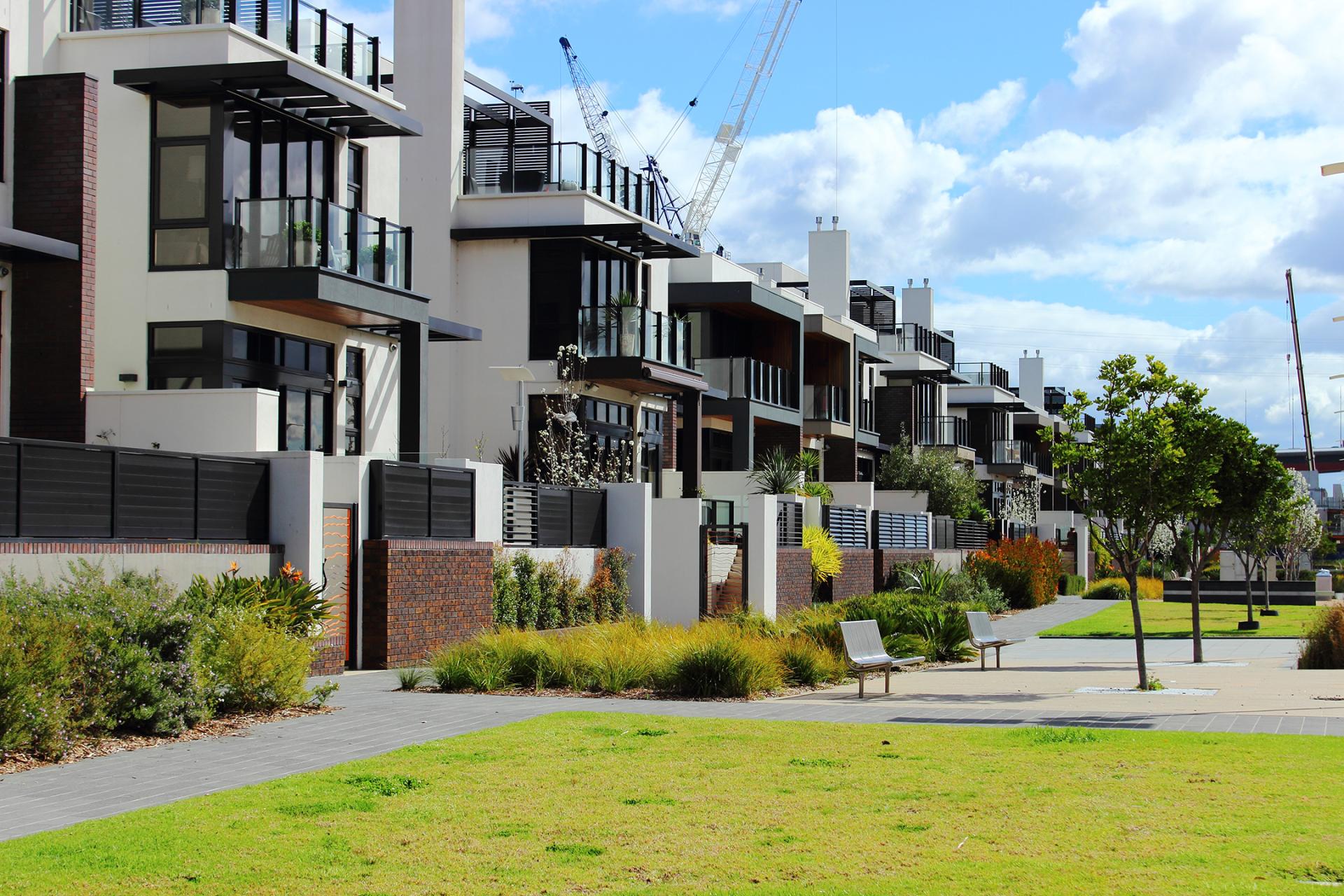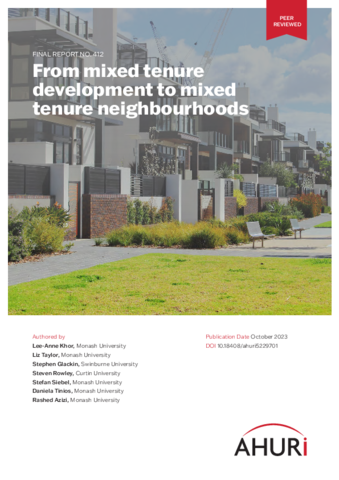This study examines the opportunities for, and benefits of, mixed tenure housing developments in Australia, and in particular how to deliver successful mixed tenure outcomes at a neighbourhood scale.
Appropriate land assembly is a primary driver of mixed tenure neighbourhood opportunities. Examination of Brisbane, Sydney and Melbourne shows that, in 2023, over 12,000 public housing properties formed suitable clusters for neighbourhood redevelopment that could deliver more than 40,000 additional new dwellings.
The three case studies presented in the research highlight that in the prevailing economic climate it is more effective, and much simpler, for the state housing authorities to sell off housing lots and use the proceeds to subsidise the delivery of social housing either directly or indirectly through CHPs.
The research found:
- the availability of capital funding will determine the development’s dwelling and tenure mix. While a 70:30 mix, where 70 per cent of housing is sold at market rate and 30 per cent sold at a discount to CHPs, is broadly accepted as best practice, there is little evidence that clearly links this benchmark to successful developments
- Neighbourhood-scale development allows state housing authorities to cross-subsidise social housing development and deliver other affordable housing products such as below-market-rental and shared-equity products on a greater scale
- developments should consider tenure-blind, mixed-income developments where tenants can shift between different subsidised or market housing forms while remaining in their community
- developers’ objectives and attitude to mixed tenure projects contributes greatly to successful developments. Development quality in private dwellings is not always high enough for social housing standards, which can result in the social housing dwellings being distinct from those delivered by the private sector
- greater consistency across state and local government jurisdictions would aid the development of appropriate funding models and approaches to mixed tenure development.


